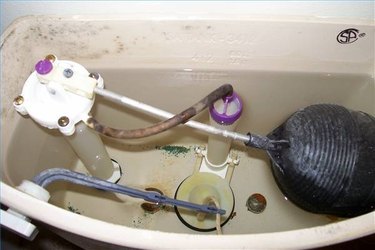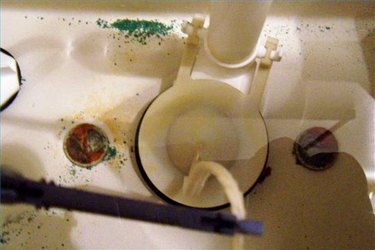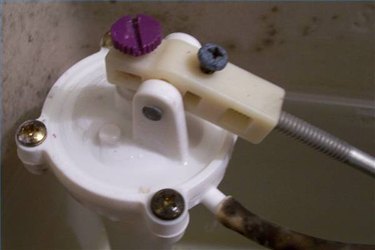
Diagnisis

Most American toilets are fairly simple devices that work using a gravity-flush system with a fill supply line operated by water pressure. The supply is activated by a refill valve that's activated by a float, which may be either a large ball on the end of a metal arm attached to a trigger or slide float that rides up and down the fill stand pipe. Most leaky toilets are easily repaired by anyone with patience and a few dollars for supplies if they spend some time troubleshooting before replacing everything in the tank. The most common problems arise from worn parts; first, check the flapper---the rubber or plastic cover in the bottom of the tank that flops up and down to start the flush. Next, check the float to make sure it isn't set too high and either bend the arm of a ball float or move the clips on a slide float to lower the level at which the float causes the fill valve to shut off. If neither of these seems to solve the problem, check the fill valve for rust or corrosion and the effectiveness of the seal on the flush valve seat (a repair requiring removal of the tank) on the bottom of the tank.
Consultation
Video of the Day

Once you've found the problem, it's time to take a trip to your local hardware store or home center for a consultation. First, turn the water off, drain the tank and remove any parts you'll need to replace. Everything except the flush valve seat comes out with a few simple twists---ball floats unscrew from the fill valve, and flappers can be lifted off hooks on the overflow pipe. Matching old parts to new is simple; they're fairly universal. Always check for equivalencies and double check with knowledgeable plumbing department staff. Sometimes assemblies can be completely replaced very inexpensively. Sometimes you can "trade up"---a slide float fill valve assembly for an old ball and arm valve for example. If your toilet is older, new plastics are available that don't corrode like metal or rot like the old rubber flappers and ball floats.
Video of the Day
Follow Through

After you've installed your new fill valve assembly, float or flapper, be sure that the chain that connects the handle on the side of the tank to the flapper is attached correctly and is long enough to allow the flapper to drop but not so long as to get in its way. Adjust the float if you've replaced it or the whole fill valve assembly. Be careful to follow instructions on parts and resist the urge to tighten bolts one more turn---you can damage the porcelain in the tank. If your tank seems to take forever to flush, check the holes under the rim. Clean clogged holes with vinegar and pipe cleaners before looking for water pressure problems.